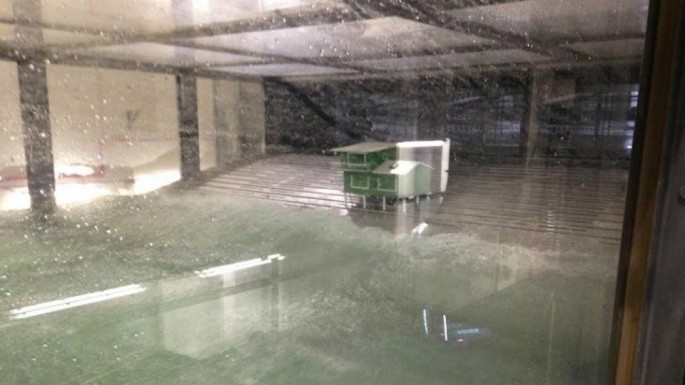Scientists at the University of Miami (UM) are conducting weather research by using the world's largest storm simulator in their new laboratory, to create on-demand hurricane conditions. A 1,400-horsepower fan can simulate the severe weather conditions of a Category 5 hurricane.
The $45 million new lab at UM is located at the Rosenstiel School of Marine and Atmospheric Science.
Its features include a clear acrylic tank that is 75 feet (23 m) long, and 6.5 feet (2 m) deep, according to Carolina Live. The huge fan inside the tank can blow the 38,000 gallons (143.8 kl) of calm sea water into white-capped waves, by producing wind speeds up to 157 miles per hour (252.6 km/h).
The Florida scientists have attached satellite sensors onto the high ceilings of the SUSTAIN lab. This gives researchers a bird's eye view to observe the hurricane simulator. Brian Haus, the SUSTAIN lab director, said that this feature will help scientists to fine-tune hurricane satellites that monitor the real-life storms.
The name of the new lab for hurricane research is Surge-Structure-Atmosphere Interaction (SUSTAIN). This research facility was built just in time for the Atlantic hurricane season, which starts on June 1.
SUSTAIN's hurricane testing laboratory has a simple yet critical mission. University researchers want to learn what causes some tropical cyclones to gain strength and quickly grow in magnitude to ultra- dangerous levels, according to Tech Times.
In particular, the UM researchers hope to examine the critical interaction between hurricanes' high-speed winds, and sea spray produced by the surface water. Scientists know that hurricanes pick up steam due to the warm temperatures of some ocean waters.
However, one tropical storm issue is still a big question mark. It is almost impossible for scientists to observe the interactions between hurricane winds and sea waters.
Scientists at UM will use the hurricane lab to improve real-time tropical storm data produced by "hurricane hunter" aircraft such as satellites, drones, an buoys. Storm forecasting by sources such as the National Hurricane Center will also be improved.
The strongest Atlantic hurricane in recorded history was 2005's Hurricane Wilma. It reached wind speeds of 185 miles per hour (295 km/h) for one minute, and caused $21 billion in damage.




























